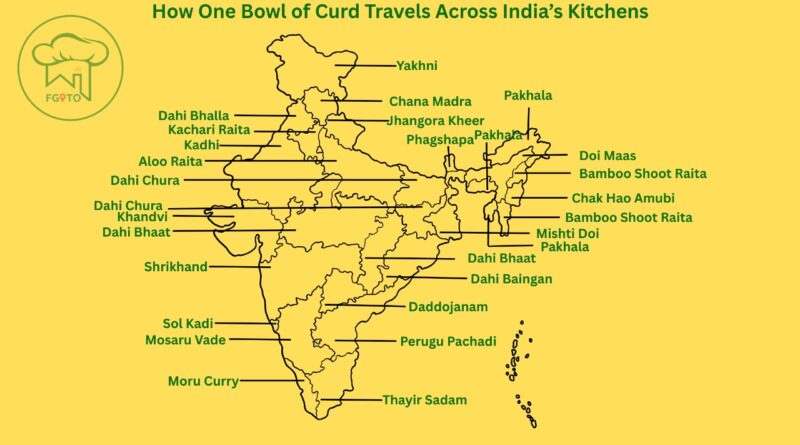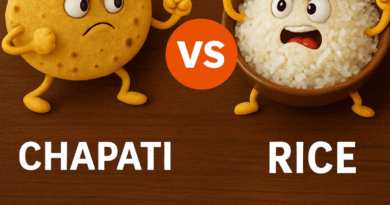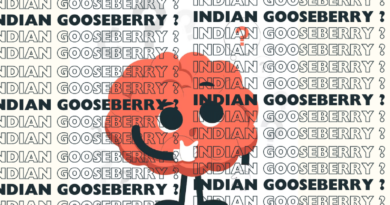Stirred, Set, and Served: How One Bowl of Curd Travels Across India’s Kitchens
Curd. Dahi. Thayir. Mosaru. Tok doi. Call it what you will—this simple bowl of fermented milk is a silent star in Indian kitchens. It slips into our breakfasts, sneaks into our lunches, and cools down our dinners. But beyond just being a meal accompaniment, curd is a culinary shapeshifter.
Isn’t it fascinating how this single ingredient, like curd, can shape-shift into countless avatars across India? From street stalls in Delhi to sweet shops in Kolkata and lunch plates in Kerala, curd plays a role so diverse, it’s a story of its own. It’s a story. A tradition. A comfort food. And a culinary connector between our diverse kitchens.
Let’s take a flavorful journey at how this one humble ingredient wears many avatars across Indian states, uniting our plates while delighting our taste buds.

East India’s Sweet Symphony—The Land of Sweet Dahi
We begin in Bengal, where curd turns into a dessert that’s as poetic as Tagore’s verses. People set Mishti Doi—a rich, caramelized sweet dahi—in earthen pots to thicken it and let it absorb earthy notes.
Not far away in Assam and Odisha, variations of sweet curd make an appearance during religious offerings and harvest festivals. In Odisha, Chhena Poda often pairs with sweet curd for a decadent finish.
North India’s Flavor-Packed Performances
Move upwards, and you enter the riot of flavors that North India brings to the table.
- Dahi Bhalla and Dahi Vada: Soft lentil dumplings soaked in sweet and tangy curd, drizzled with chutneys and spices. From Delhi’s Chandni Chowk to Lucknow’s gallis, these are festive staples and street-food icons.
- Dahi Puri: Maharashtra may claim it, but dahi puri has fans across North India. Crisp puris, spiced potato filling, and curd that cools the chaos in every bite—this dish is crunchy, creamy bliss.
- Punjabi Raita & Boondi Dahi: In Punjab, curd is often whipped into thick raitas mixed with roasted cumin and fresh vegetables or boondi for texture. A thali without it? Unthinkable.
- Hung Curd: This North Indian innovation gives us Shrikhand—a yogurt dessert infused with cardamom and saffron. But it also moonlights as a base for dips, spreads, and even sandwich fillers.
- Bihar’s Dahi-Chura: Simple yet significant, this dish marks the harvest festival of Makar Sankranti in Bihar. Flattened rice soaked in curd, served with jaggery or sugar—Dahi-Chura is not just nutritious, it’s also deeply cultural.
South India’s Cool, Comforting Touch of Dahi
South Indian kitchens bring curd into the spotlight in a more grounded, everyday way.
- Thayir Sadam (Curd Rice): In Tamil Nadu, curd rice is more than just food—it’s comfort, especially in the hot summers. Often tempered with mustard seeds, curry leaves, and ginger, it’s eaten at the end of meals for cooling and digestion.
- Perugu (Andhra) / Mosaru (Kannada) / Thayir (Tamil): These words may differ, but the love is the same. Whether as spiced raita, a side for biryani, or just a bowl with rice and pickle, curd is indispensable.
Even Kerala’s Moru Curry—a spiced buttermilk-based dish—is a reminder that curd isn’t just eaten, it’s sipped, slurped, and celebrated.
Western & Central India’s Tangy Touch
In Gujarat and Rajasthan, curd takes on a deeply nourishing and functional role.
- Kadhi: A tangy yogurt-based curry thickened with gram flour and spiced with mustard seeds, often paired with rice or khichdi.
- Shrikhand and Matha: In Maharashtra and Gujarat, hung curd is sweetened and spiced to make Shrikhand, and curd’s diluted cousin matha (buttermilk) is consumed as a digestive drink.
- In Madhya Pradesh and Chhattisgarh, dahi-bhaat (curd rice) is eaten to cool down the body during peak summer months.
Northeast India’s Quiet Integration
While dairy doesn’t dominate Northeastern cuisine the way it does elsewhere, curd is not absent.
- In Sikkim and Arunachal Pradesh, curd is used in fusion recipes and modern kitchens—thanks to growing influence from other states and food trends.
- In parts of Tripura and Manipur, curd is occasionally used in chutneys or served with rice during ceremonial meals.
Even though it doesn’t shout for attention here, its presence is still quietly respected.
Also Read: The Golden Spice of India: A Journey Through the History and Significance of Haldi
The Nutritional Bonus of Dahi
Curd isn’t just flexible in form; it’s powerful in function.
- It’s rich in probiotics, aiding digestion.
- A great source of calcium and protein, especially for vegetarians.
- Naturally cools the body—making it a seasonal superfood.
- Its versatility makes it suitable for savory, sweet, fermented, or baked applications.
Final Thoughts
And the list goes on…….
Curd’s journey across India is a beautiful reminder of the comfort and tradition found in every home-cooked meal. At FGITO, we bring that very essence to your table—delivering authentic, home-cooked dishes made with love, including these timeless curd-based recipes, right to your doorstep in Noida and Lucknow. Because every meal deserves to carry the warmth and heritage of India’s kitchens.
Its nourishing qualities, rich flavors, and countless forms make curd not just a food item but a symbol of Indian culinary unity—adaptable, wholesome, and deeply loved. So, the next time you scoop up a spoonful of dahi vada, relish the sweetness of mishti doi, or savor the tang of kadhi, remember you’re tasting a piece of India’s diverse and flavorful heritage.
Indeed, curd is much more than just fermented milk—it’s the heart of India’s kitchens, a timeless ingredient that brings comfort, health, and joy to every meal.




